Founded in 1139, Portugal is one of the oldest countries in Europe, with the recognition of Afonso Henriques as the first King of Portugal. But it was only in 1179 that Pope Alexander III acknowledged Portugal's independence from the Kingdom of León, providing the country with international recognition. It has some of the oldest borders in Europe, if not the oldest, as they have remained nearly unchanged since the Treaty of Alcanizes was signed in 1297 between the King Dinis of Portugal and the King Fernando IV of Castile, which established the border between the two kingdoms.
With a rich cultural heritage, this sunny paradise has many must-see historical sites that you can explore, and ancient monuments filled with wonderful stories to tell those who take the time to listen.
Braga Cathedral
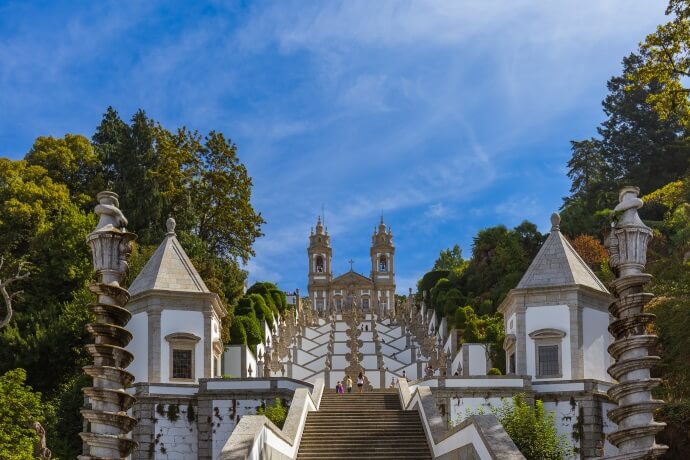
Braga is an important religious capital with an incredibly ancient architectural heritage. Its Sé is Portugal's oldest cathedral, and it is at least a thousand years old. This cathedral was built in the 11th century on the former location of a Roman temple and an early Christian church. It has since then undergone many renovations and additions over time, resulting in a blend of different architectural styles, such as the Romanesque, Gothic, Manueline, Renaissance, and Baroque.
The exterior of the cathedral has enormous square towers and a sumptuous main portal, boasting elaborated carvings and sculptures. The interior is just as outstanding, featuring a nave supported by massive columns and two aisles lined with chapels, altarpieces, and religious artworks. The ceiling is adorned with stunning frescoes and the sacristy contains a remarkable collection of religious pieces and vestments. The Cathedral’s Chapel of the Kings houses the tombs of a few of Portugal’s medieval monarchs.
Pena Palace
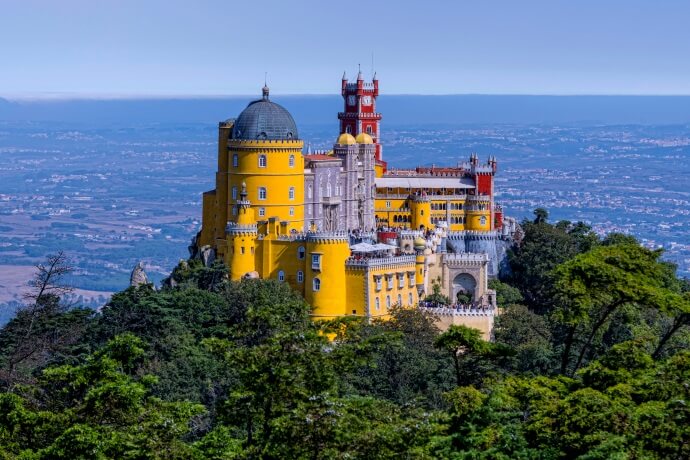
Sintra is a romantic destination in the midst of lavish green vegetation and fairy-tale palaces, the Pena Palace being perhaps the most majestic of them all. This World Heritage Site located atop the poetic Serra de Sintra has been declared a National Monument and is considered one of Portugal's Seven Wonders. Boasting vibrant colors and stunning gardens, it was built in 1854 to serve as a summer residence for King Ferdinand II, who had fallen in love with Sintra – and once you have been there, it’s easy to understand why.
The striking building combines different styles and the rich decorations inside are just charming, with artworks and furnishings that have been preserved. Take the time to walk through the enchanting Pena Park, a vast green area spread out over 200 hectares (or 494 acres), which includes species of trees and plants from all over the world that the royal family collected over the years. It is filled with secret trails, mystic ornaments, and magical lakes. The palace’s colorful Queen Terrace has the most breathtaking view over Sintra, so make sure to stop there and soak up the atmosphere.
Batalha Monastery
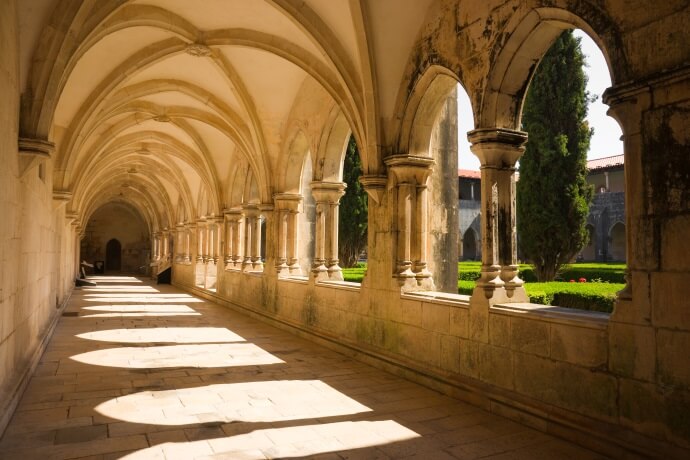
Batalha, which means battle in Portuguese, witnessed the Batalha de Aljubarrota which ensured Portuguese independence from Castille in the 14th century. The battle was so important that King John I of Portugal ordered the construction of a monastery to celebrate and show his gratitude to the Virgin Mary for this victory. Today, the Batalha Monastery is a UNESCO World Heritage Site and combines the Gothic and Manueline styles.
Its construction began in 1386 but continued for over a century and it has undergone many renovations, including after the earthquake of 1755. Boasting intricate stone carvings, arched ceilings, and flying ramparts, the most stunning feature of the monastery is its unfinished chapel, which was intended to be the final resting place of King John I and his wife Philippa of Lancaster. The chapel is a Gothic masterpiece, with delicate stonework and ornate decorations. It also features a remarkable beautifully ornate cloister, with a two-story arcade of sharp arches and a garden placed in the center.
Marvão Castle
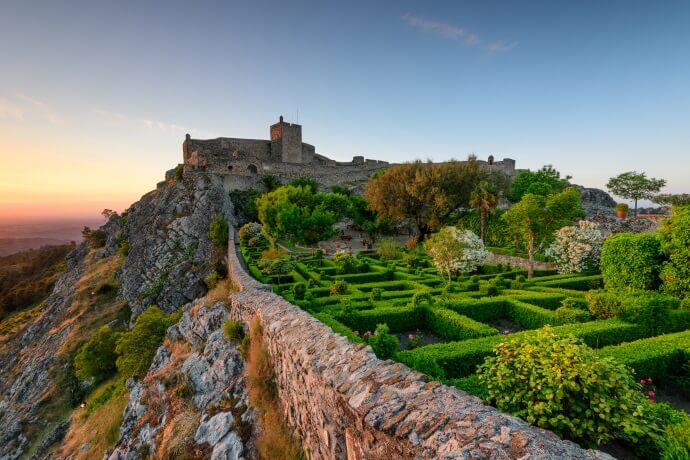
Marvão is a town in the Alentejo region, which is located on a hill and gives a clear sight to both Portugal and Spain. This stunning site houses the Marvão Castle.
Built by King Dinis as a strategic defense against the Spanish, this castle dates back to the 13th century, and it has undergone many renovations. One of the most outstanding features of the Marvão Castle is its remarkable fortifications, as the castle is surrounded by a double wall, one nearly 13 feet thick and another over 6 feet thick. The castle's main entrance is through a massive gatehouse that is lined by two defensive towers. The castle has various rooms and structures, including the keep, which is the castle's main tower. It also houses a small museum inside, which showcases the castle's history and the town's culture, featuring a collection of artifacts and exhibits.
From the top of the keep and surrounded by lavish foliage, the charming historic castle offers a superb view over the town, including the Serra de São Mamede mountain.
Convent of Christ
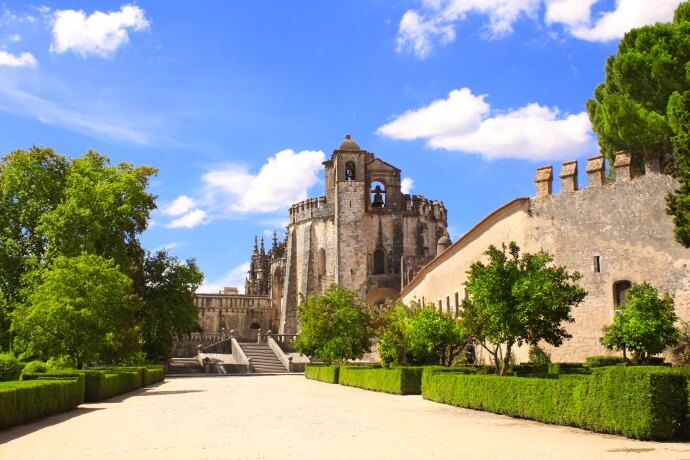
The Convent of Christ, or Castle of Tomar, is a unique monument with stunning details, such as the Janela do Capítulo, an ornate window in Manueline style. Located in Tomar, known as the city of the Knights Templar, it is considered one of the most important architectural and cultural landmarks in Portugal. The convent was founded in the 12th century and expanded over time, serving as a stronghold of the Knights Templar, a military order of knights responsible for protecting Christian pilgrims traveling to the Holy Land. It is now a UNESCO World Heritage site, recognized for its historical importance.
The convent’s impressive architecture combines numerous elements of the Gothic, Manueline, and Renaissance styles, and visitors can explore its fascinating structures, including the Charola, or Templar Round Church, which was inspired by the Church of the Holy Sepulchre in Jerusalem. The convent also features a striking cloister, a huge dining hall, and a collection of several significant paintings and artifacts. Its ornate decoration and detailed carvings are a testament to the skill and dedication of the craftsmen who built it. Besides its cultural significance, one of the most prominent features of the Convent of Christ is its symbolic and spiritual meaning.
Vila Viçosa Ducal Palace
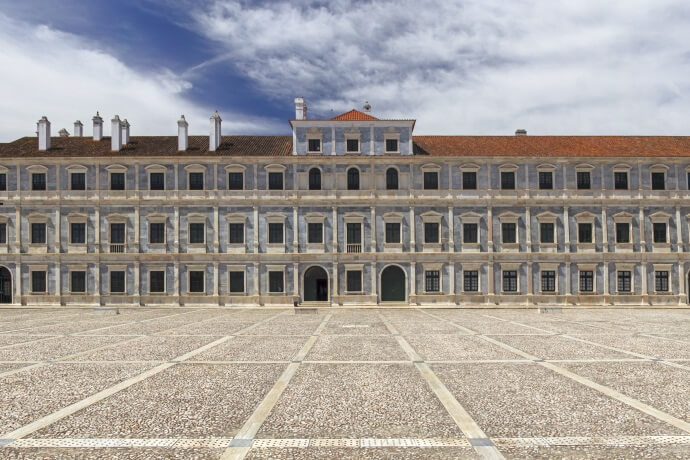
The Paço Ducal, or Ducal Palace, is the most emblematic building in Vila Viçosa, a small village in Alentejo with a remarkable architectural heritage. Its construction extended from the 16th century to the 18th century, resulting in a mixture of styles that characterize the building, which used to be the holiday home of the Dukes of Braganza, one of the most important noble families in Portugal. Several artifacts that belonged to this royal family can be seen in the palace’s museum.
The palace is a superb example of the Portuguese Renaissance architecture, with elegant balconies, ornate details, and its beautiful main façade made with marble. Surrounded by gorgeous gardens and a moat, it exudes a truly royal aura. Inside there is a vast collection of rooms, adorned with lovely frescoes, tapestries, paintings, and sophisticated furniture. The Hercules Room and the Virtue Room are particularly outstanding, as well as the Chapel of the Palace, with its lavish intricate carvings and beautiful paintings. There is also a library with about 50 thousand books, some of them being incredibly rare. In the old stables, you can see several examples of magnificent coaches and carriages.
Jerónimos Monastery
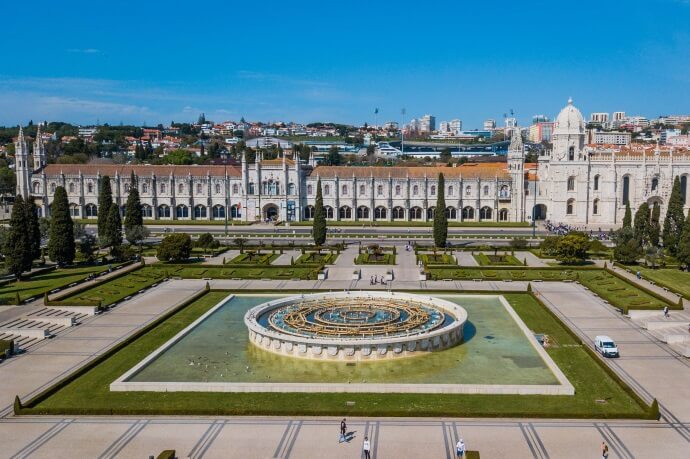
Located in Belém, there is the imponent Jerónimos Monastery. Classified as a National Monument and a UNESCO World Heritage Site, this monastery is the pinnacle of Manueline architecture. It houses the tomb of Vasco da Gama, a famous explorer, and of some famous Portuguese writers, such as Luís de Camões and Fernando Pessoa.
Considered one of the most notable examples of the Portuguese late Gothic Manueline architecture, the construction of the monastery took over a century to complete, being only finished in 1601. I was built to celebrate Vasco da Gama's successful maritime trip to India, which marked the beginning of Portugal's golden age of exploration. It is characterized by its intricate stonework and ornate decoration, incorporating maritime elements. Inside the monastery, there are ornate cloisters with skillfully carved columns and elaborate stone arches. The church, connected to the monastery, features a remarkable high altar and several chapels dedicated to numerous saints.
Guimarães Castle
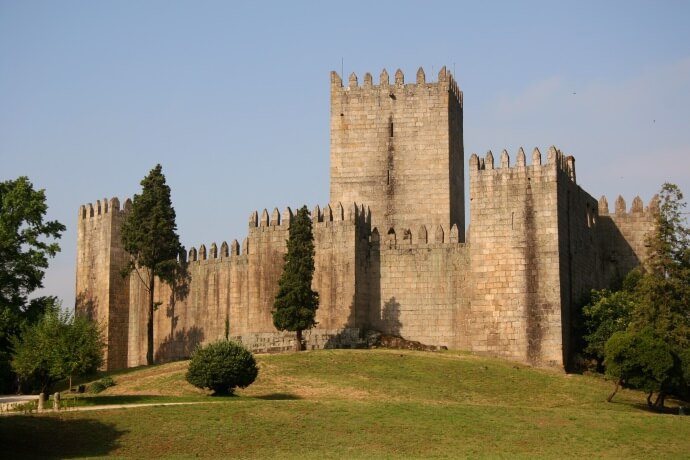
Guimarães is considered to be the birthplace of Portugal, because it was where Afonso Henriques, the first king of Portugal, was born. Its historic center has been classified as a World Heritage Site.
The Castle of Guimarães was built in the 10th century to defend the region from the Moors, who were then invading the Iberian Peninsula. It was expanded and improved over the centuries, becoming an imposing fortress with a central keep, towers, walls, and a moat. The castle was truly crucial in the battles that shaped the Portuguese history, such as the Battle of São Mamede in 1128, where Afonso Henriques defeated his mother and consolidated his power. In the 19th century, the castle was abandoned, but it was later restored and opened to the public. Its ramparts, battlements and courtyards can be explored, and you can learn about its history and architecture through various exhibitions and guided tours.
The Guimarães Castle is more than a medieval castle, it is a symbol of the Portuguese identity, as it is strongly associated with the foundation of the Portuguese nation itself.
Bone Chapel, Évora
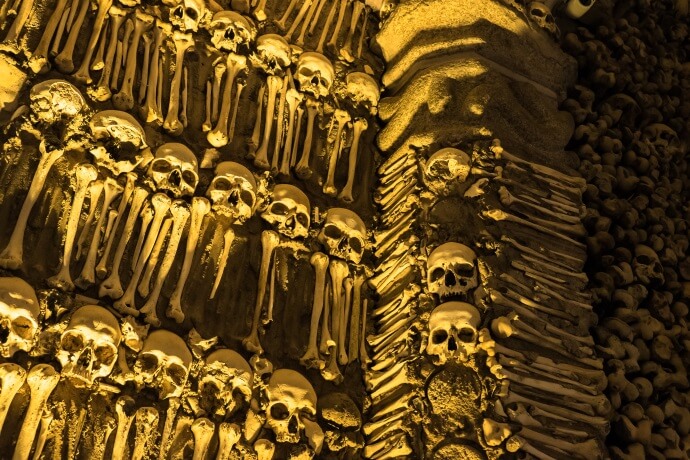
Évora’s historic center has been classified as a World Heritage Site by UNESCO. Here you will find the eerie Bone Chapel a peculiar and macabre small built in the 17th century by Franciscan monks, who wanted to send a message to the local population about the fleetness of life. The chapel was designed to be thought-provocative and meditative, where visitors can contemplate their own mortality.
Entirely decorated with human bones, it is estimated that there are about 5000 human skulls among countless bones. In the center of the chapel is an altar, which is also adorned with bones, as well as a crucifix and other religious icons. At the entrance of the chapel, an eye-catching phrase is engraved on the door: “Nós ossos que aqui estamos pelos vossos esperamos” (“We bones here are waiting for yours”). Even though the Bone Chapel is not for the faint of heart, for those who are able to handle the experience it can be quite a fascinating experience.
Carmo Convent

The Chiado quarter is an elegant and upscale neighborhood located between Bairro Alto and Baixa, a cultural hub of the city, and home to the Carmo Convent.
Founded in 1389 by the Portuguese knight Nuno Álvares Pereira, and originally home to the Carmelite order of monks, it was then expanded and renovated over the centuries, becoming an important center of religious and cultural life in Lisbon. The 1755 earthquake, the worst Lisbon ever witnessed to this day, caused extensive damage to the city and, especially, to the Carmo Convent. Today, its ruins are a unique attraction in Lisbon. The Gothic-style church, now roofless, is still standing and it is now used as an archaeological museum that features a vast collection of ancient artifacts. You may explore the ruins and see the remains of the convent's cloisters, chapels, and tombs.
The location of the Carmo Convent makes it a unique spot that offers stunning views over Lisbon's hillsides and the Tagus River.
Ready to travel back in time?
The cultural footprints of every person and every event that has contributed to Portugal’s history and archeological wealth, imprinted across its various monuments, attests to Portugal’s fascinating identity. It exudes history from every corner, and walking its streets, entering its antique buildings, and soaking up the atmosphere that surrounds you is sure to make you feel like you are travelling back in time.



